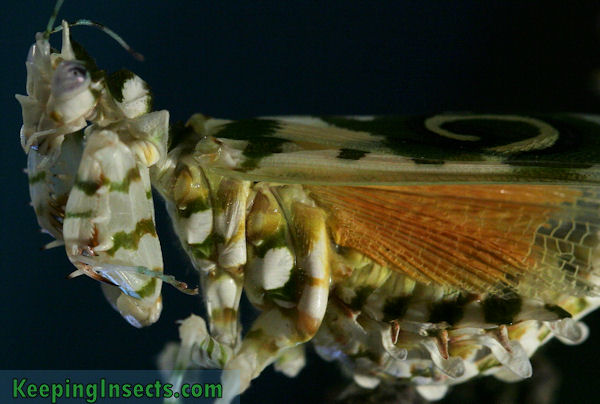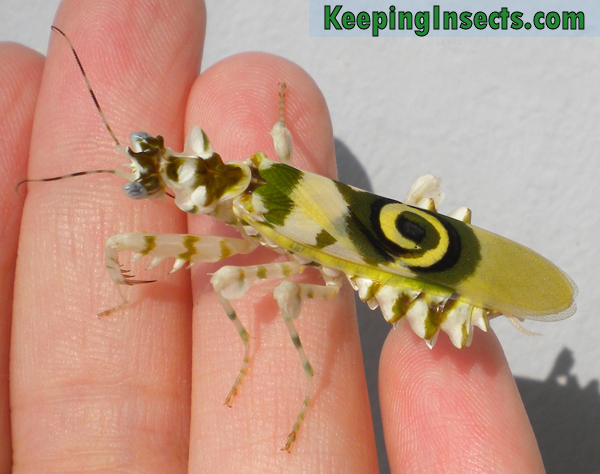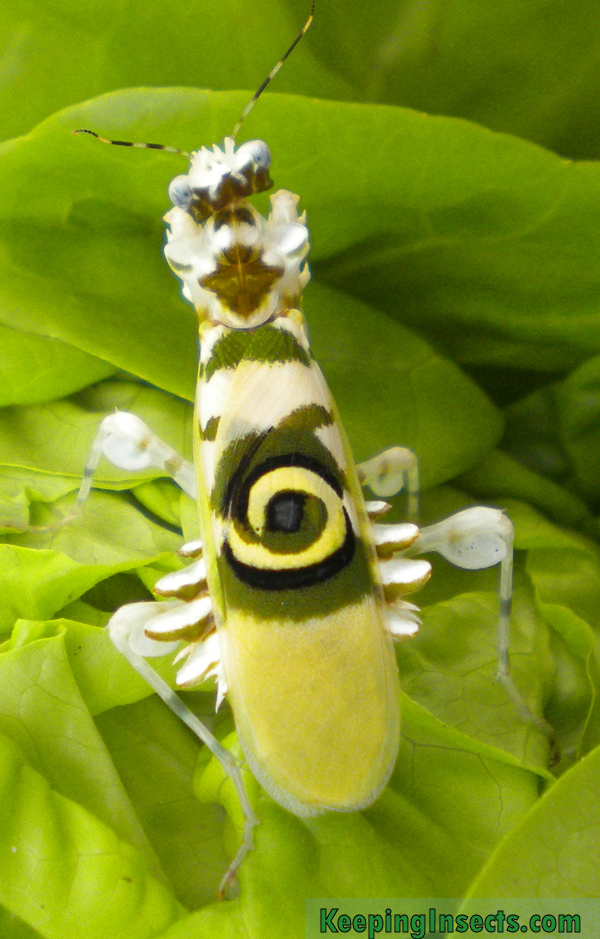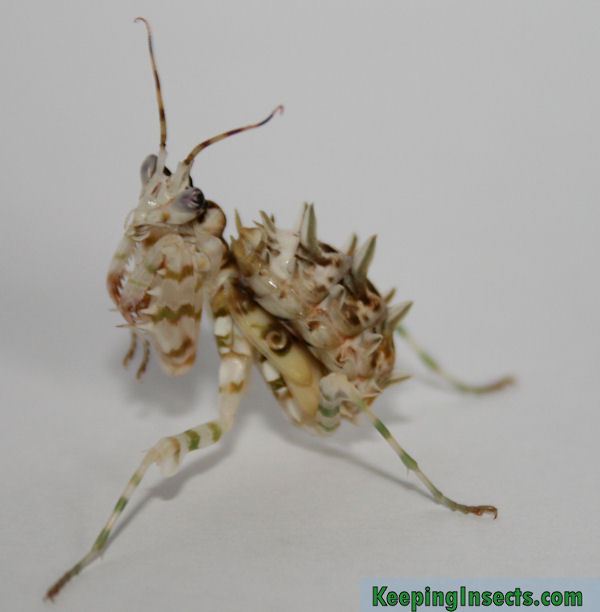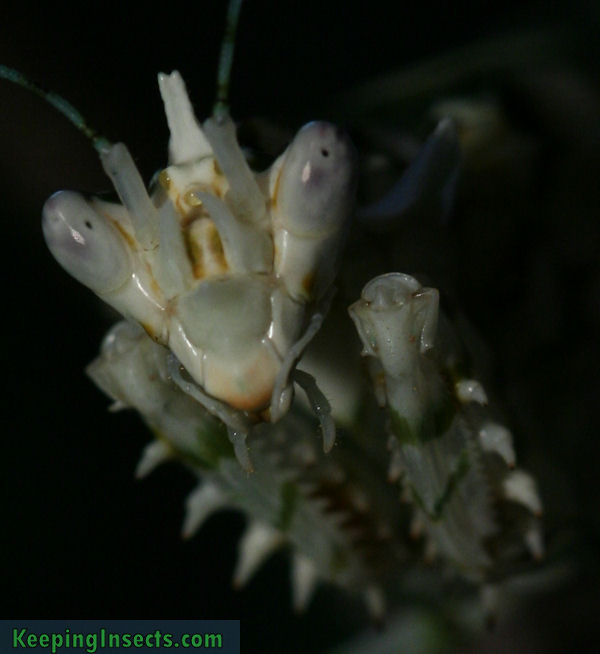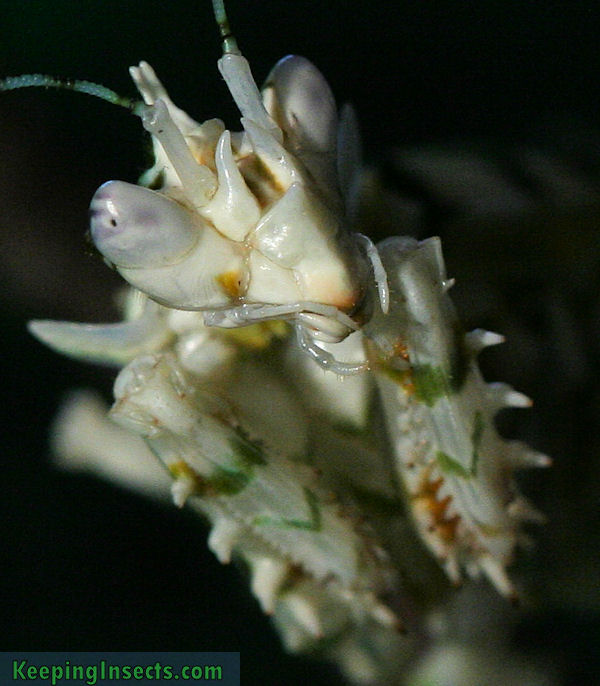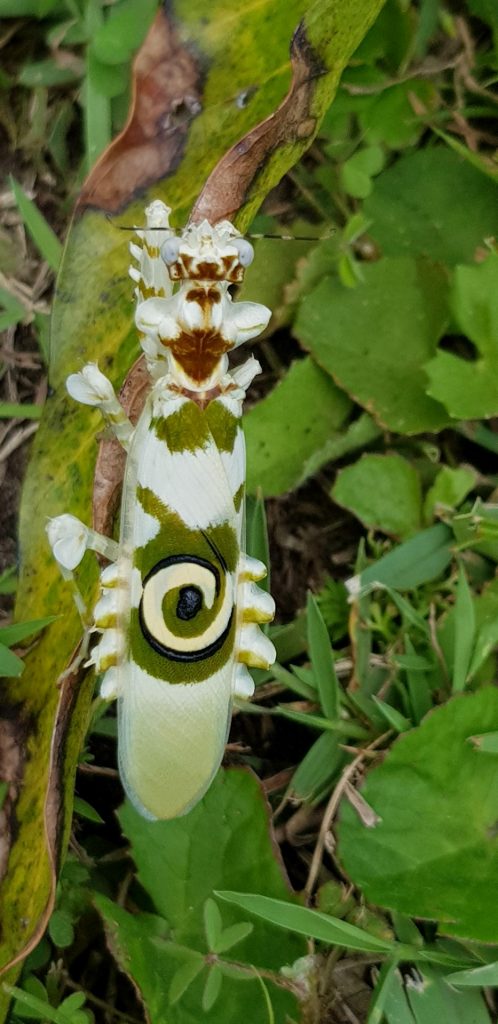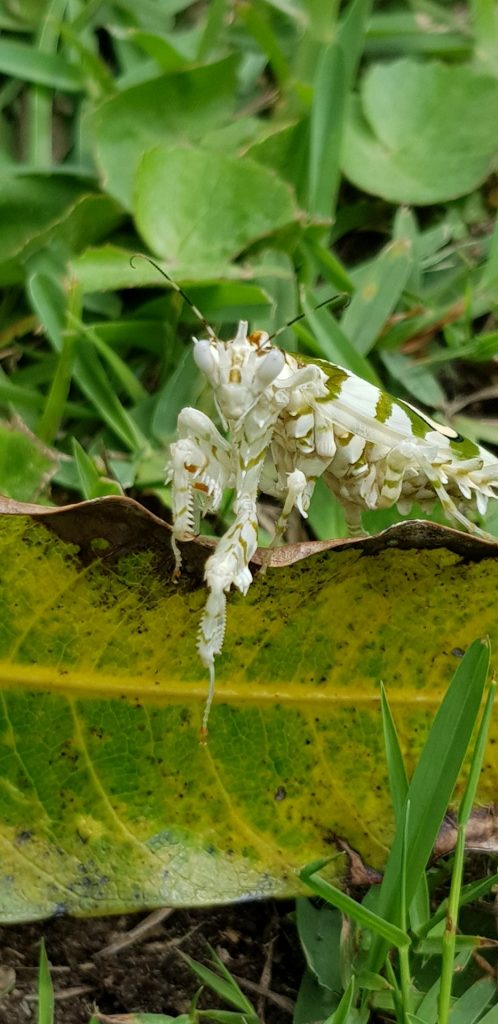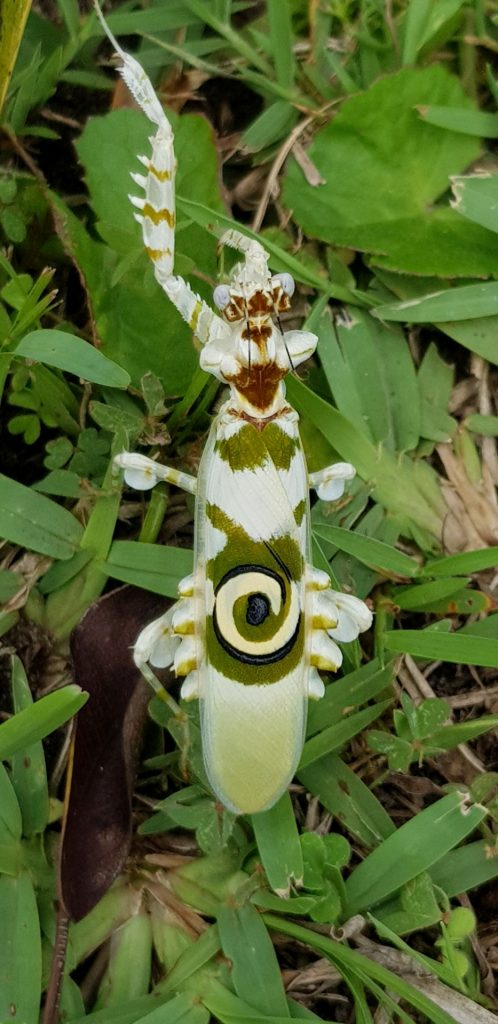The spiny Flower Mantis, or Pseudocreobotra wahlbergii, is a beautiful and colorful flower mantis. They are white with orange and green stripes, and as adults they have a beautiful patch of color on their wings that looks like an eye.
This species of praying mantis has its natural range in sub-Saharan Africa. Read all about caring for Pseudocreobotra wahlbergii mantises in this caresheet.
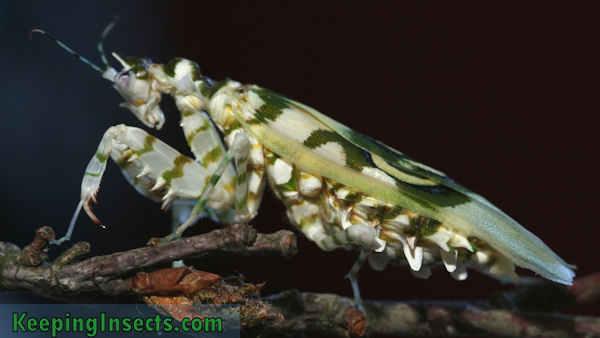
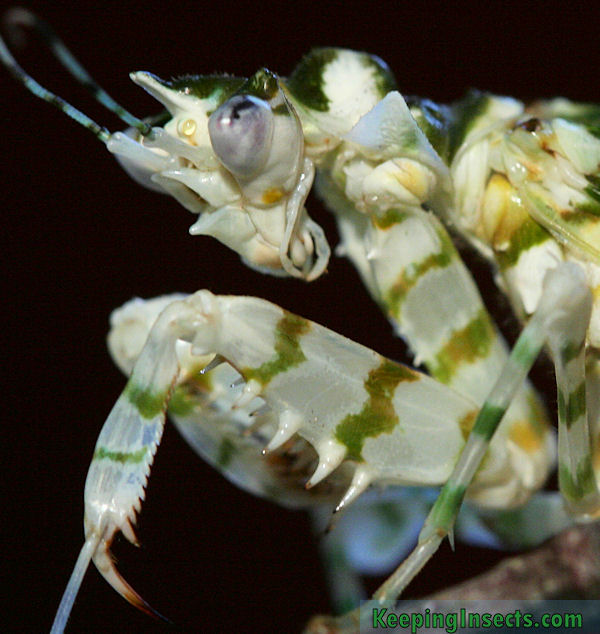

Appearance of the Spiny Flower Mantis
This species of flower mantis is white with green stripes on the legs. The eyes are purple, depending on the light conditions this can vary from lilac to deep purple. As nymphs these mantids have an orange spot on the upside of the abdomen which scares away predators by mimicking an eye. As adults they have wings with a black and yellow ‘swirl’ on them, also mimicking an eye. If you threaten a spiny flower mantis, it will put its wings upwards to show the two eyes. The thinner wings that are under the top wings are bright yellow. The spiny flower mantis is very beautiful and spectacular.
When the nymphs are born they are black in color. They stay blackish until L3 instar stage. After this stage they are mostly orange-pink spotted and become more and more white which each subsequent molt.
Spiny Flower Mantids are approximately 4 to 5 inches cm as adults. Males and females look pretty similar in this species.
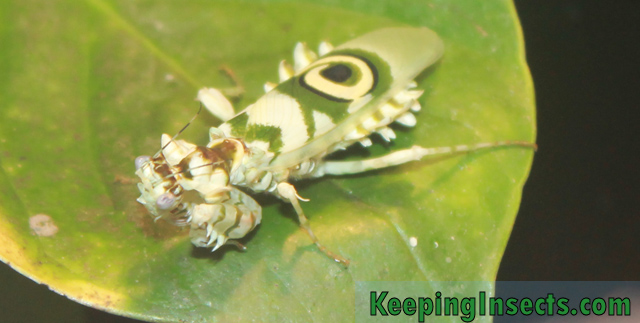
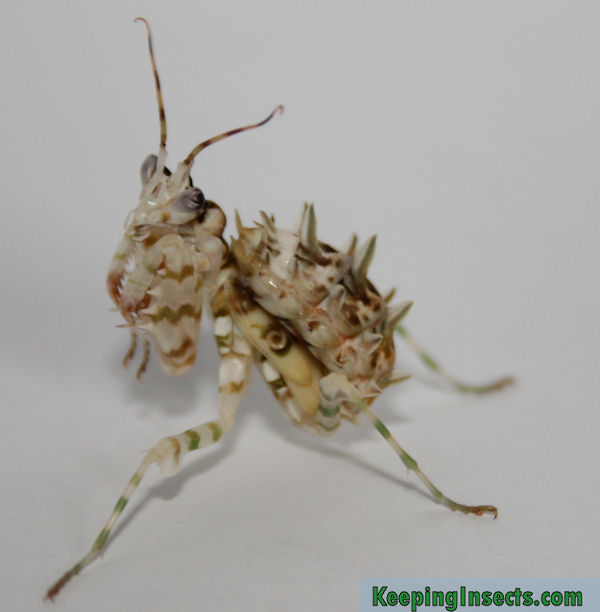
Behavior of the Spiny Flower Mantis
This species is fairly quiet, but can also actively hunt their prey once they have spotted it. Some individuals are easily agitated and will display their wings at the slightest disturbance, while other individuals almost never show their thread display.
Because of their size this mantis cannot be fed large prey items like adult locusts. It is best to feed them moths and flies instead of crickets.
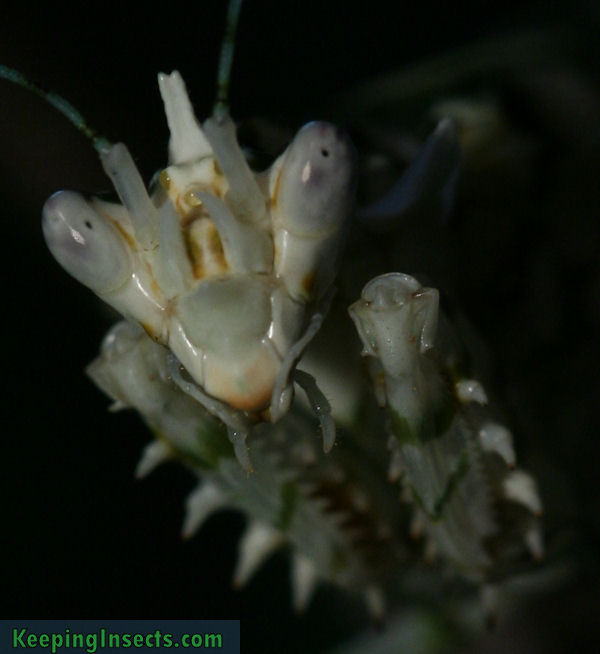
Environmental conditions
The ideal temperature is about 26 ° C, but can vary between 25 ° C and 30 ° C. At night the temperature should be at least 18 ° C.
This species has no very high demands on the humidity, but too much moisture is deadly to them because of infections. Spray about 3 times a week with clean water. Drinking from the water droplets is important for this species. Proper ventilation is crucial, and mold should be avoided at all times for this species. Especially the adults may do better in a dry environment than a too wet environment. The air humidity should be around 60%.
As with all species of praying mantis, this species needs an enclosure that is at least 3 times the length of the animal in height, and at least 2x the length of the animal in width. For an adult this means is at least 15 cm in height and 10 cm in width. A nice size for a terrarium would be 20 x 15 x 15 cm (hxwxd), so there is room for lots of fake plants and perches. Especially white or yellow plastic flower look amazing in an enclosure with this species of mantis, as the mantis will blend into the environment of the flowers really well.
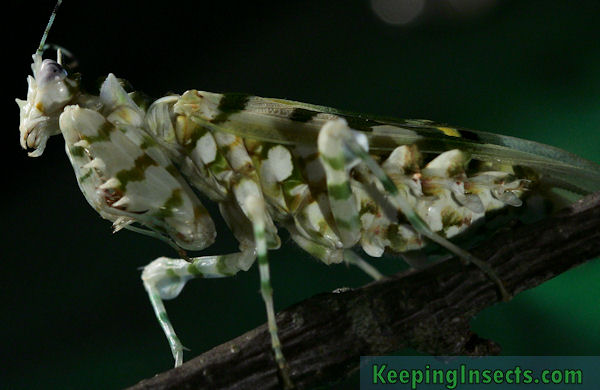
Cannibalism
This species is cannibalistic, like most species of praying mantis. It will eat anything that moves and is the correct size, also members of its own species or family members. Young nymphs (up to L4) can be kept together, but the older they are the more likely they will eat each other.
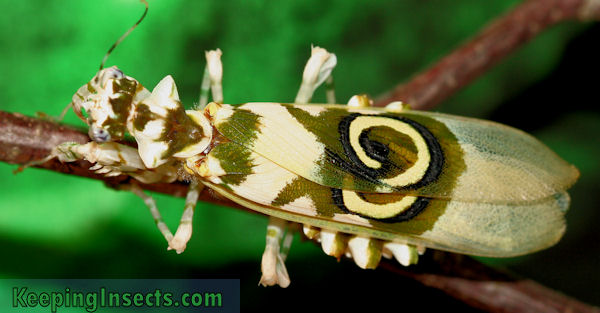
Breeding and sexing Spiny Flower Mantises
This species is not very easy breed, but if you have experience with other species it is possible. The female can be very aggressive, so make sure it has eaten enough when male is introduced to her enclosure.
The females of this species are larger, heavier and broader than males. The sex of the mantis can be determined by looking at the segments on its abdomen. In later nymphal stages it may be noticed that the males remain smaller and have thicker antennae than the females. As adults you can distinguish males and females by the length of the wings. A female has wings almost to end of the abdomen, while the male has wings that reach past the abdomen. The antennae of the male are much longer and thicker than those of the female. The egg sacs must be kept in the same way as the mantis itself. Beware of mold, it arises from an excessively damp environment. Approximately 30 to 55 nymphs may come out of one ootheca.
